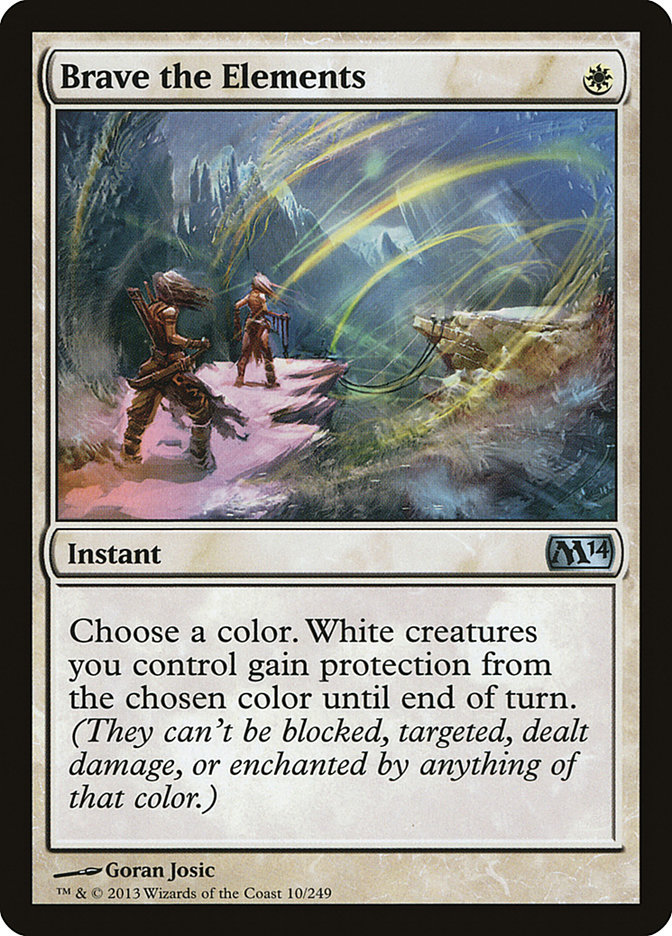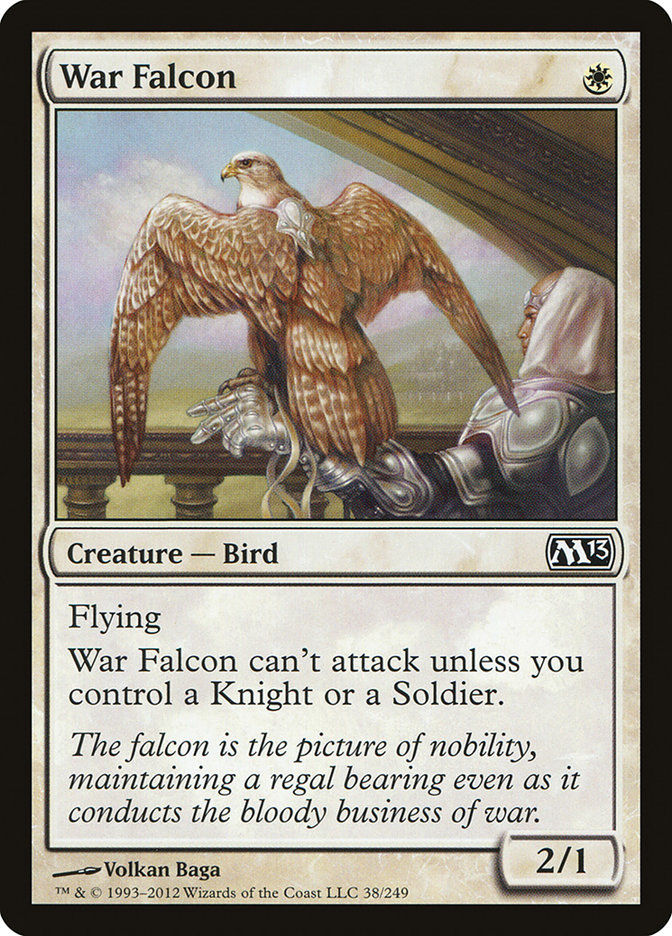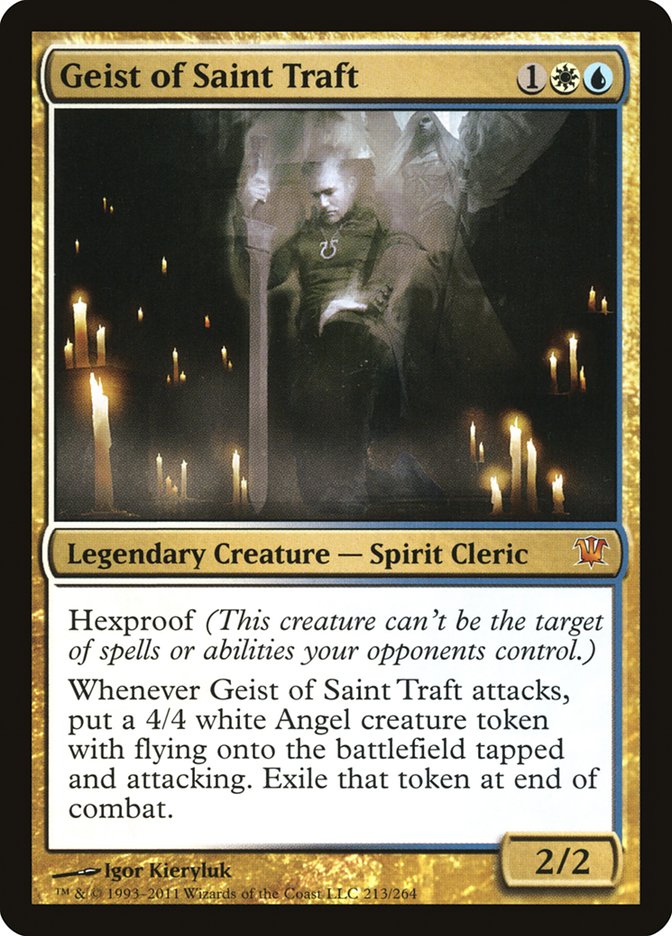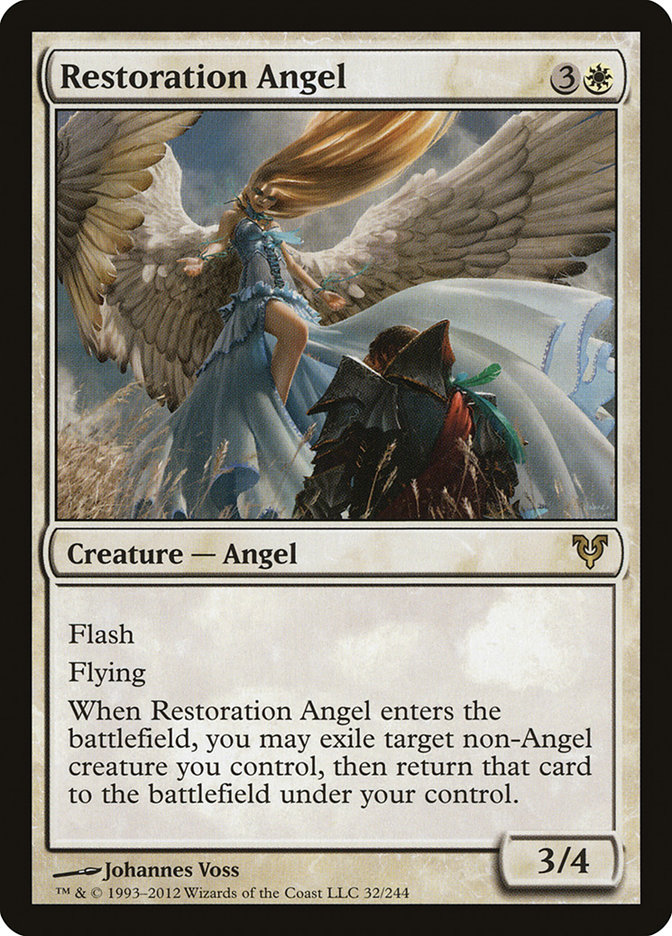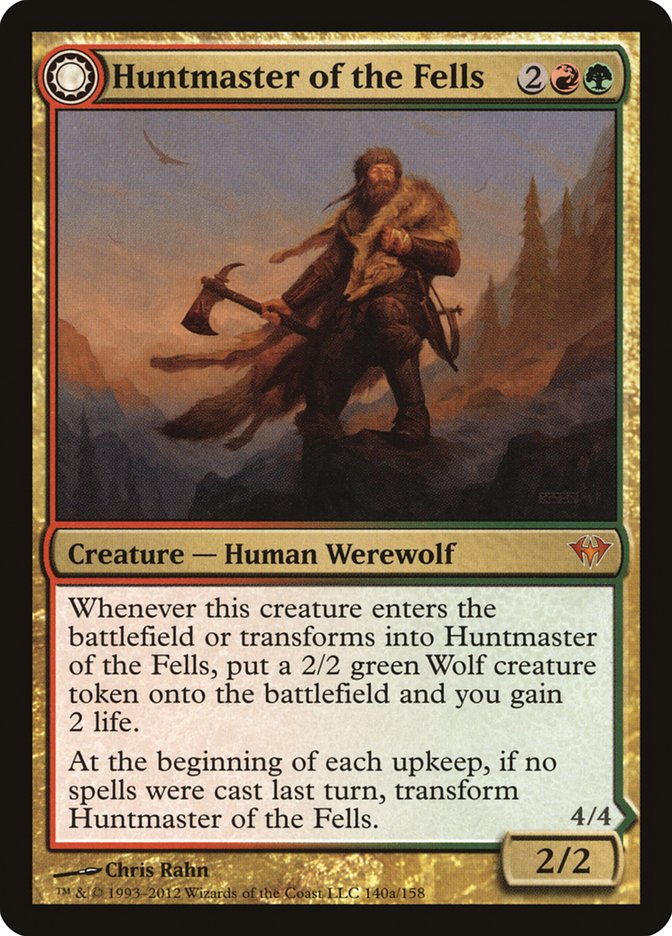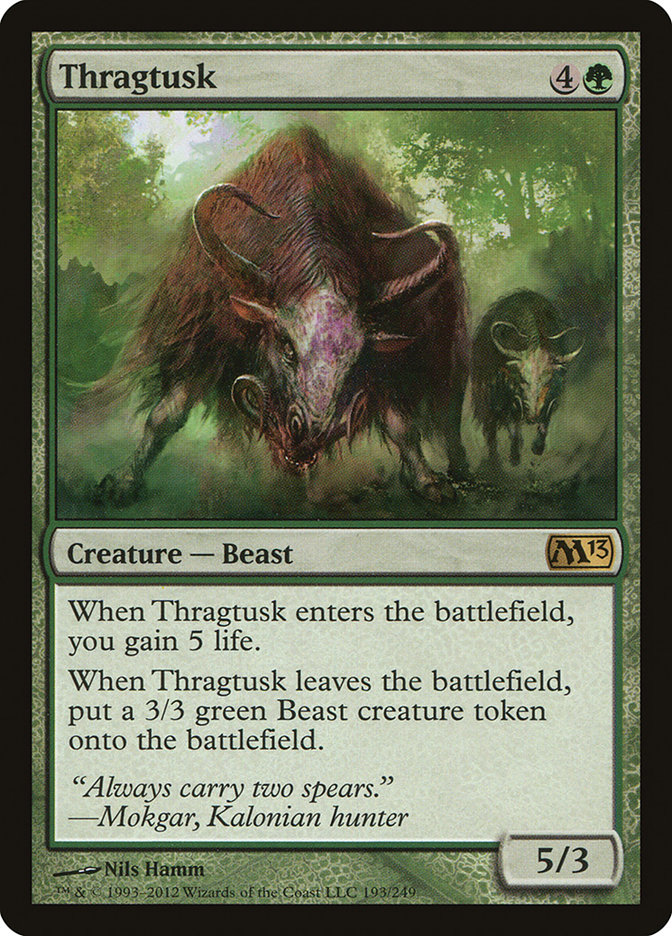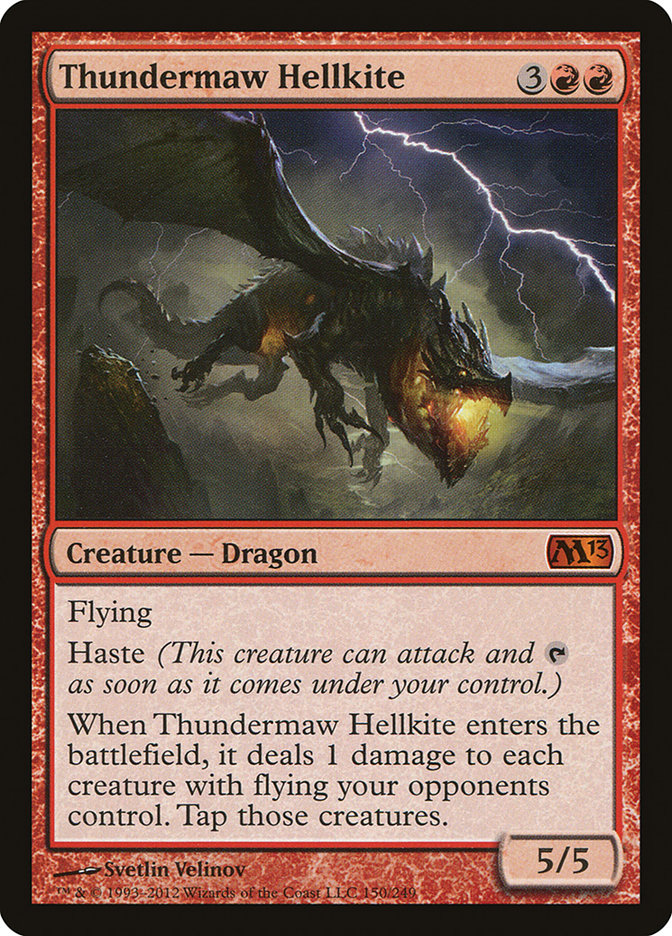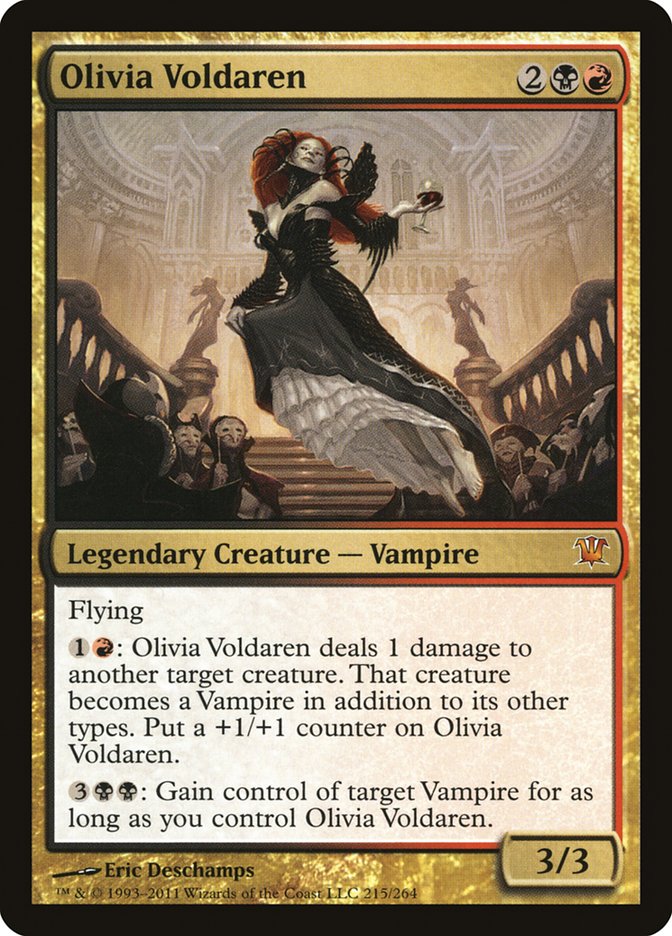Brave the Elements is no stranger to the spotlight. Paul Rietzl used it as a key part of his White Weenie deck in the final Extended Pro Tour, beating a slew of decks and a legal Punishing Fire / Grove of the Burnwillows combo with a deck full of 2/2s.
Creatures (22)
- 4 Figure of Destiny
- 4 Ethersworn Canonist
- 4 Knight of the White Orchid
- 2 Ranger of Eos
- 4 Steppe Lynx
- 4 Student of Warfare
Lands (23)
Spells (15)

The card is clearly powerful. For one mana, you get your choice of Falter (two-mana effect), Safe Passage (three-mana effect), or a Dispel / Vines of Vastwood style counterspell (one-mana effect). The only cost is that you play white creatures, which is just a framing issue.
The real inspiration for me to explore this card was from just the right man for the job. Just under three years after Brave’s top finish, Craig Wescoe brought the card back to the same city and finished fifth in the World Championship.
Creatures (29)
- 4 Champion of the Parish
- 2 Doomed Traveler
- 4 Thalia, Guardian of Thraben
- 4 Silverblade Paladin
- 4 Sublime Archangel
- 4 Knight of Glory
- 3 Banisher Priest
- 4 Fiendslayer Paladin
Lands (24)
Spells (7)
Sideboard

I’m sure no one is shocked to see Craig rocking basic Plains and creatures. Actually, the most shocking thing I found out is that he didn’t play Brave the Elements the last time he made Top 8 of a Pro Tour with White Weenie when the card was legal. The question everyone is likely asking is does this deck actually have a reason to exist?
Silverblade Paladin is almost the entirety of that reason. The other parts are Sublime Archangel and Champion of the Parish. In the game of how can we deal Thragtusk levels of damage, these are your weapons of choice. And while it sounds like anti-synergy, Sublime Archangel is still a four-power creature to bash with when you Brave the Elements.
Well, I guess Burning Earth is another incentive. That card is a nice one too.
One big takeaway from this list: notice how the two-drops line up against Augur of Bolas. Knight of Glory bashes through it, and Thalia, Guardian of Thraben is nothing short of a monster against decks that feature that card. U/W/R Flash is definitely one of the true top decks in the format (though not to the extent that Worlds suggests), and making sure you are positioned well for that matchup is a big deal with aggro decks. Thalia also passes the Huntmaster of the Fells test by beating a Wolf token in combat. Cards like Azorius Arrester that have been all-stars in past version of white aggro will not cut it in the current metagame. The bare minimum is probably Daring Skyjek, which can fly over the 1/3 Merfolk Wizard from time to time.
Aside:
One quick follow up on Burning Earth. Do not play the Burning Tree Emissary lists. Burning Earth is absurdly good right now. Grizzly Bears are not. The Kibler G/R deck is the bare minimum in size you need. Craig’s deck also does things that can beat a Huntmaster of the Fells and as such is within reason.
Also, Burning Earth makes the burn spells in the format actually good. All of the Huntmaster of the Fells or Thragtusk decks are the ones that lack basic lands. If you have cards like Searing Spear in your deck and a Burning Earth in play, you can afford to trade for their creatures knowing that eventually they will run out of life to cast more spells. A different form of attrition than most people are used to seeing, but effective nonetheless. This is one of the operating principles behind the Big Red list with maindeck Burning Earths.
If you want to play Burning Earth in your Brave the Elements deck, this is a good start. But what if we want to make a better aggro deck? Doomed Traveler doesn’t especially bring the beats.
Creatures (30)
- 1 Mikaeus, the Lunarch
- 4 Champion of the Parish
- 4 Doomed Traveler
- 3 Thalia, Guardian of Thraben
- 4 Dryad Militant
- 3 Precinct Captain
- 4 Frontline Medic
- 3 Banisher Priest
- 4 Imposing Sovereign
Planeswalkers (2)
Lands (4)
Spells (24)

This deck from the StarCityGames.com Standard Open in Richmond a couple weeks ago showcases where to go from here. Dryad Militant is your other aggressive one-drop option that lines up with Brave the Elements here.
The other big takeaway here is that if you want to go small, Frontline Medic is the card you need. It’s analogous to how the red decks focus on Firefist Striker and Pyreheart Wolf to break through the green bodies in the format. If you can keep attacking once their Huntmaster lands and not lose board position, you can keep up a race instead of just having the game end.
That said, there are a significant number of flaws here. The two-drops here are significantly worse against Augur. Precinct Captain just gets stopped for days, and Imposing Sovereign only has an effect if it comes down first. Random 2/2s and 2/1s aren’t going to cut it. Ajani, Caller of the Pride is also subpar in a deck where nothing besides Champion of the Parish hits four power.
The forgotten card that I think ties the room together is War Falcon. Champion of the Parish; Doomed Traveler; Dryad Militant; Knight of Glory; and Thalia, Guardian of Thraben are all Soldiers or Knights. It flies over the various green blockers and Augur of Bolas.
Creatures (32)
- 1 Mikaeus, the Lunarch
- 4 Champion of the Parish
- 3 Thalia, Guardian of Thraben
- 4 Knight of Glory
- 4 War Falcon
- 4 Dryad Militant
- 4 Boros Elite
- 4 Frontline Medic
- 2 Banisher Priest
- 2 Imposing Sovereign
Lands (4)
Spells (24)

Traditionally this style of deck always features an anthem effect, and while Path of Bravery may or may not cut it, the card is the best you have. There are only so many Mikaeuses you can play, and that card doesn’t have "haste" like a normal anthem. You have to cut the Oblivion Rings to keep the curve reasonable, but who needs removal anyway? The plan against Olivia Voldaren is just kill them first, which may or may not be ambitious.
Moving back a bit, I’m not saying Imposing Sovereign isn’t an interesting or important card. In testing for Pro Tour Gatecrash in Montreal, my team had a fair amount of Blind Obediences maindeck, and they shredded the green creature decks. Of course, there was another card that was a huge part of that equation:
Incidentally, Geist of Saint Traft is also awesome with Brave the Elements. Faith’s Shield was a staple singleton in Delver for a while last year, and Brave is just a bigger version of the same card.
Moving back to Delver, this is the deck I want to emulate.
Creatures (16)
Lands (10)
Spells (34)

Brave the Elements plus Snapcaster Mage is a significant number of Falters, and Snapcaster Mage is a Human for Champion of the Parish. Delver of Secrets obviously doesn’t fit the format anymore or synergize with Brave the Elements, but if we are going to be running Gather the Townsfolk anyway to boost Snapcaster Mage, that helps enable Boros Elite. Moorland Haunt is also one of the more powerful Innistrad lands that hasn’t found a home this year.
The issue is finding cards that fit with Snapcaster Mage and the rest of the deck. Feeling of Dread is an interesting option that provides extra copies of Brave the Elements, but it’s not good with Snapcaster Mage. Syncopate can pull a reasonable Mana Leak impression, but again Snapcaster is only marginally friendly with it. Spell Rupture is likely the best counter you have. I’ve seen Swift Justice in a few lists over the year, but you really can’t be serious if you plan on playing more than two. Azorius Charm is not aggressive removal, though it provides the cantrip value you are looking for one Snapcaster Mage. Thought Scour is a cantrip, but it won’t carry you close to the distance Ponder and Gitaxian Probe would.
The best I’ve come up with is Dramatic Rescue and Unsummon. A third color could help (Boros Charm or Simic Charm come to mind), but at that point are you going to play enough white creatures to make Brave the Elements worth it?
Here are some rough shells to showcase these ideas. I would not promote playing any of these as is, but they are starting points with some potential.
Creatures (23)
- 3 Snapcaster Mage
- 4 Champion of the Parish
- 4 Geist of Saint Traft
- 3 Knight of Glory
- 4 Boros Elite
- 2 Frontline Medic
- 3 Imposing Sovereign
Lands (12)
Spells (25)

Here’s an old one from Pro Tour Gatecrash testing that shifts away from Champion of the Parish and the Humans shell.
Creatures (20)
- 3 Snapcaster Mage
- 4 Geist of Saint Traft
- 4 Restoration Angel
- 3 Knight of Glory
- 3 Boros Reckoner
- 3 Imposing Sovereign
Lands (22)
Spells (18)

Warleader’s Helix is a big gain since the last time I examined this deck. U/W/R Flash has demonstrated how far Snapcaster Mage plus Helix can go, and this deck is a much better burn deck than the one with Azorius Charm. Part of the issue before was that Boros Charm didn’t interact with aggro, and now you have a card that does what Charm did and blows out people who want to attack.
Finally, there is the bigger option. Loxodon Smiter, Voice of Resurgence, Knight tokens. These are all White creatures. While Brave the Elements is Bonfire insurance, a list like this has a better plan A against that card by not flooding with 1/1s.
Creatures (29)
- 3 Thalia, Guardian of Thraben
- 3 Silverblade Paladin
- 3 Sublime Archangel
- 4 Dryad Militant
- 4 Loxodon Smiter
- 4 Experiment One
- 2 Daring Skyjek
- 4 Voice of Resurgence
- 2 Banisher Priest
Lands (10)
Spells (21)

This deck is reminiscent of the lists Brian Kibler was rocking towards the start of the season. He was playing Faith’s Shield, and Brave the Elements is just the better version of that card if you make it that way. The Silverblade Paladin + Sublime Archangel pairing fits very well alongside the 4/4 body of Loxodon Smiter.
My big concern is if the mana lines up for Experiment One and double white spells. There might be enough guys for War Falcon if that doesn’t pan out. Of the lists here, I feel like this one utilizes Brave the Elements the best. Faltering with 4/4s is a much bigger effect than trying to set up the right board of 2/2s.
My even bigger concern is that this is just a bad version of Naya. Do you even need Brave the Elements if you could just be slamming Thundermaw Hellkites? This isn’t nearly as vulnerable to Burning Earth, but wasn’t Naya one of the decks you want to consider Burning Earth in?
These lists are likely much worse than the Burning Earth decks from last week. Most of them probably aren’t playable. A lot of this is an exercise in brewing to get back into shape for rotation. Standard and Modern have been a lot of refining existing lists for the last four-to-six months. Big change is coming with Theros. Say goodbye the following:
This format has been defined by midgame threats for which the best answer is playing your own copies of them. Blood Baron of Vizkopa, Kalonian Hydra, and Archangel of Thune are a completely different set of cards. They aren’t two for ones, and we are back to a world where Mizzium Mortars or Doom Blade matters. They only end games in combat and don’t negate your opponent’s ability to play creatures. Your opponent has time to respond to them instead of just taking five from a hasted Dragon (or the less played Wolfir Silverheart and Sublime Archangel). The closest match to any of these is Advent of the Wurm, and that’s still an enters-the-battlefield trigger away from Restoration Angel.
There’s a reason Far // Away is barely playable in Standard and absolutely game breaking in Block Constructed. We are moving slightly from Battlecruiser Magic and back towards some old school business, only with worse counterspells.
Brief Note on Worlds:
The biggest takeaway here is that the things you see at sixteen-man events on a local level apply all the way up to the top. The strain of multiple formats kept people close to their expected ranges, and you can see how Reid Duke exploited this in Modern. This is something that can be used by everyone who shows up to battle at FNM. People tend to play what they know when they don’t invest time into an event, and getting a level ahead is simple when everyone is in that boat.

